 |
| Horses in the field next to Cudham Road, Downe. 16 June 2012. |
I showed the same mare in a post about
Downe Bank in 2011. She seems to have had another foal, with very similar colouring.
We (the Orpington Field Club) went a week later last year, and this year the weather has been unusually cold and wet, so we didn't see the same range of plants and butterflies. But we did see several caterpillars.
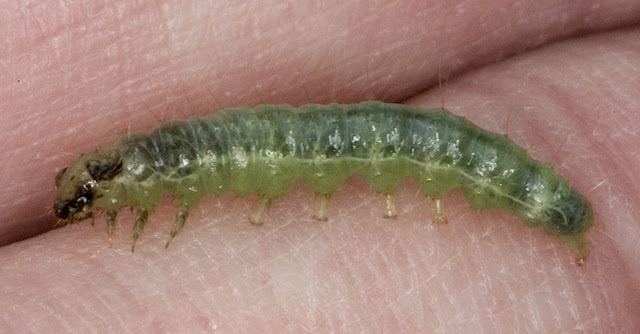 |
| Mother of Pearl late instar larva, Pleuroptya ruralis, on the track leading to Downe Bank Nature Reserve, 16 June 2012. |
This one was living in a curled-up nettle leaf on the side of the track. It will turn into a pretty moth; there's one in the first photo here:
Sevenoaks Moths. I like nettles. There is nearly always something interesting in there, and I always collect some stings.
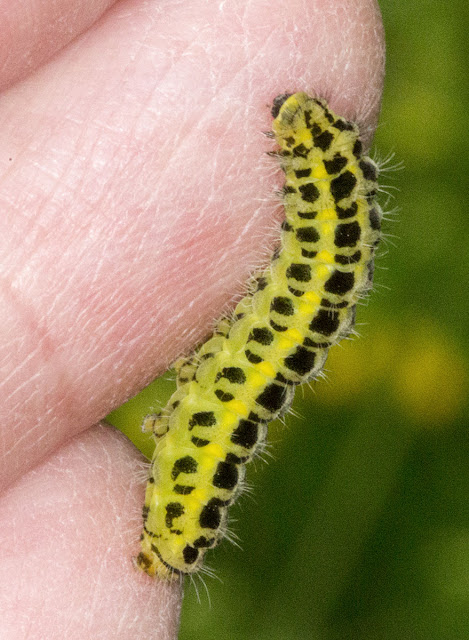 |
| Larva of Six-spot Burnet, Zygaea filipendulae. Downe Bank Nature Reserve, 16 June 2012. |
This one lives on Common Bird's-foot Trefoil, and will turn into a smart black moth with red spots. There will be hundreds of them to see later on. On the other hand,
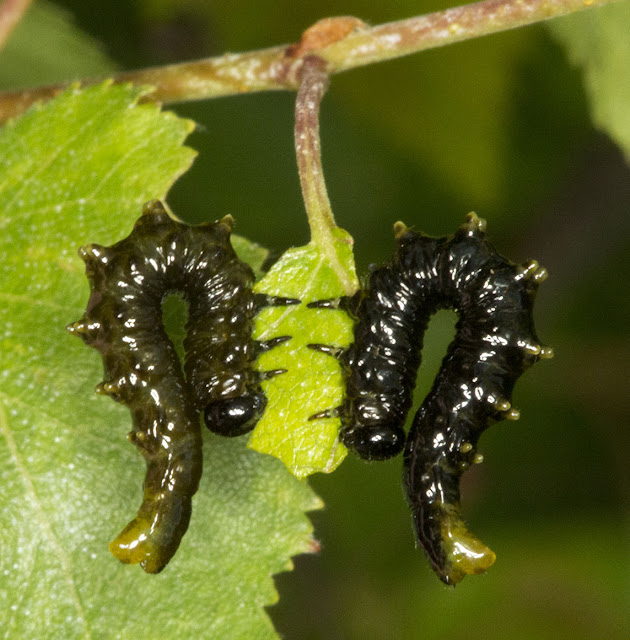 |
| Sawfly larvae, Symphyta, on Silver Birch. Downe Bank Nature Reserve, 16 June 2012. |
these are not any sort of butterfly or moth. They will turn into sawflies. I haven't posted any of those yet; I will link back here when I do. You can tell they aren't Lepidoptera by the number of pairs of prolegs, those stumpy legs that come after the six neat-looking pointed ones. No butterfly or moth has this many.
These caterpillars were munching happily on a Silver Birch tree until I got too close, when they all suddenly curled back into this display, which I expect is supposed to startle predators into leaving them alone. Some sawfly larvae are known to give off defensive chemicals, and these are probably doing just that.
Of course, we did see many interesting and lovely flowers too.
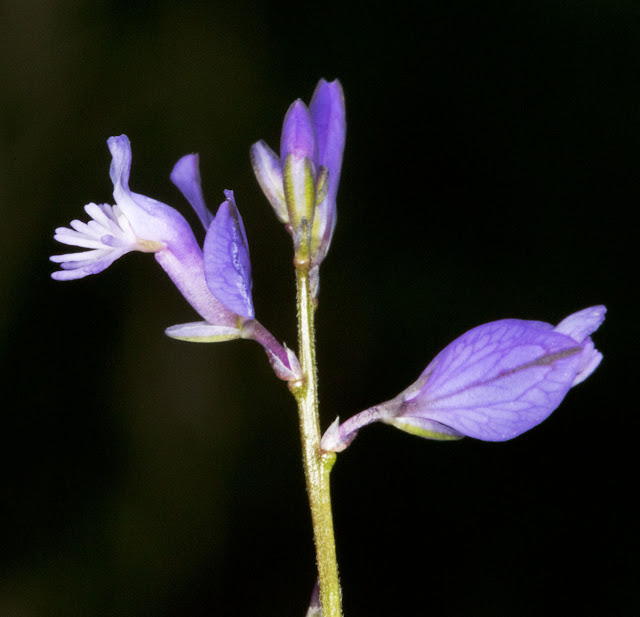 |
| Common Milkwort, Polygala vulgaris. Downe Bank Nature Reserve, 16 June 2012. |
This one, with its intricate and delicate structure, is quite common on chalky ground. The flowers are no more than a centimetre long, and the colours on different plants vary through pink, blue and purple.
Here's one that is harder to spot.
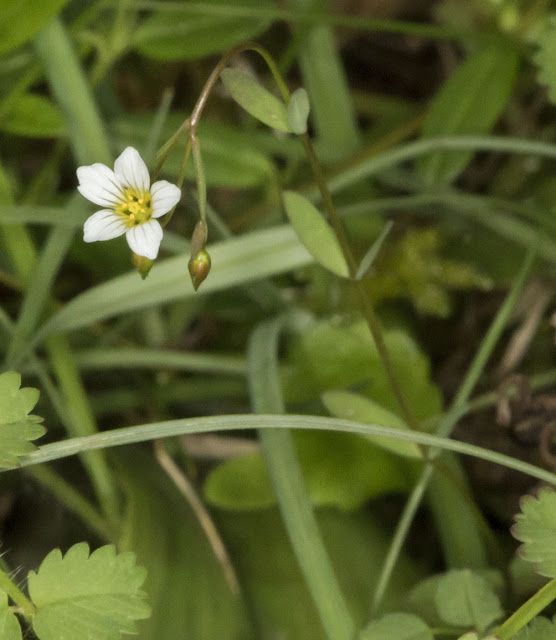 |
| Fairy Flax, Linum catharticum. Downe Bank Nature Reserve, 16 June 2012. |
A tiny white flower almost hidden in the grass. It is a true flax.
I can't leave this post without showing a Roman Snail.
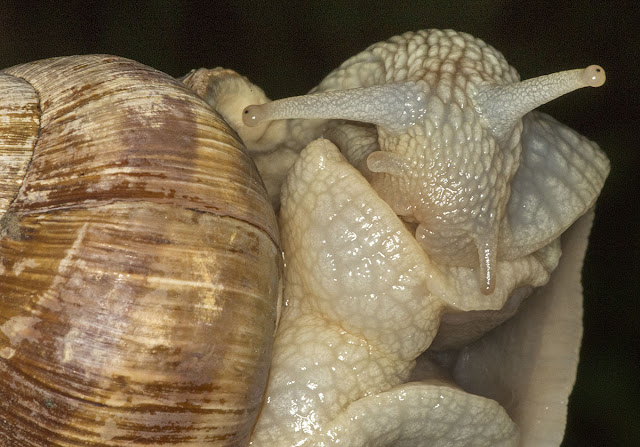 |
| Roman Snail, Helix pomatia. Downe Bank Nature Reserve, 16 June 2012. |
This chunky creature, with a shell 5 cm across, is edible, but protected. Roman Snails are rightly named. They were brought over by the Romans, like apple trees, but unlike apples, they are not a regular part of our diet.
And a last view of the lively foal.
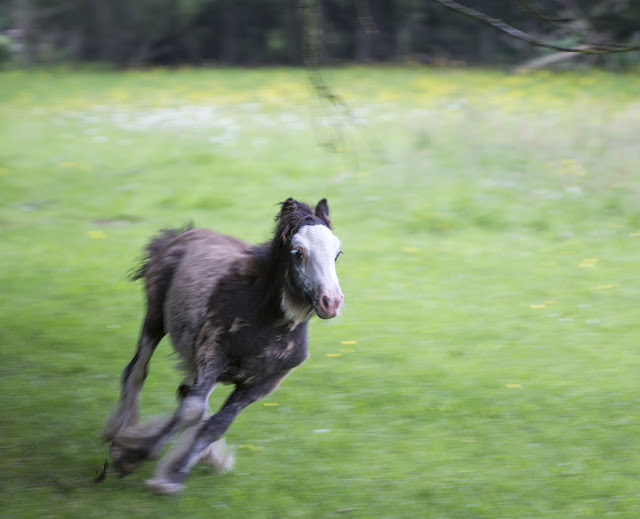 |
| Foal in the field next to Cudham Road, Downe. 16 June 2012. |
These and some more photos are on line here:
Downe Bank, June 2012.








No comments:
Post a Comment